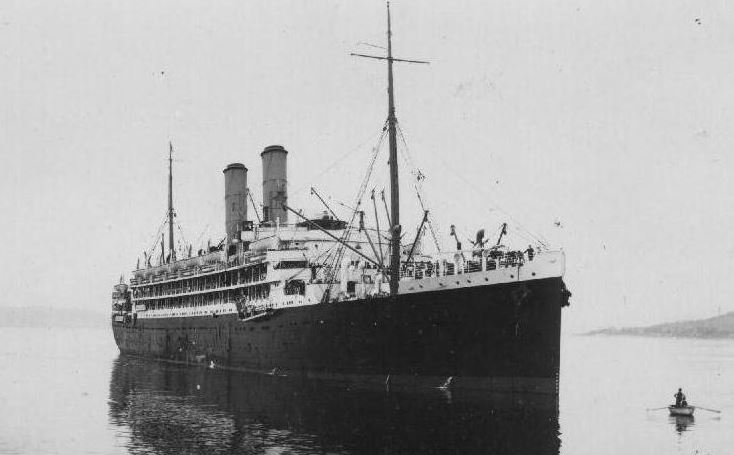RMS Ormonde
From Our Contribution
Contents
Remarks
On October 21, 1913 the keel of the new Orient liner was laid in Yard 425 at the John Brown & Co Ltd, shipyards at Clydebank. However, with a war imminent all work was halted in August 1914 and the un-named ship remained unfinished in the yard.
Yet, due to the war being very close, there was a demand for troopships, thus early in 1917 work on the ship recommenced and she was completed with spartan quarters suitable for troops. On February 10, 1917 she was launched without a ceremony, or any fuss, and remaining un-named, she was towed to the John Brown Fit-Out Berth where she would be completed.
In October 1917, she was officially requisitioned under the “Liner Requisition Scheme” as a Troop Transport ship and a month later, on 3 Nov 1917 the completed troopship was delivered to the Orient Line. On 5 Dec 1917, she was officially registered at Glasgow in the ownership of the Orient Steam Navigation Company Co. Ltd., London as Ormonde, with a tonnage of 14,853 GRT. Over the following year she was attacked by German submarines on three occasions, survining each one.
Once the Ormonde had completed her trooping duties on June 14, 1919 she returned to John Brown’s Fit-Out berth at Clydebank where she would be completely refitted into what she was originally meant to be, a fine Passenger liner. She was fitted with spacious lounges, saloons and dinning rooms and accommodations for 278 First Class, 196 Second Class and 1,017 Third Class passengers. On April 2, 1920 the Ormonde struck the bank whilst in the Suez Canal, which damaged two blades of her port propeller, yet, she was able to continue to Colombo, Ceylon at a reduced speed. Having arrived there she was dry-docked, and her propeller was rapidly changed and she continued to Fremantle, and then to Sydney and Brisbane.
In November 1939 the British Admiralty requisitioned her to become a troop transport ship once again. She was again refitted at her builder’s yards receiving 1,560 berths for troops. She was despatched on May 30, 1940 to assist with the withdrawal from Narvik, northern Norway. Then on June 16, 1940 she took onboard elements of British Expeditionary Force from St Nazaire, France. Which was followed up in July by landing a Garrison in Iceland. During 1941/1942 the Ormonde operated trooping services to South Africa, Egypt and India, as well as participating in invasion exercises. In November 1942 the she landed troops in Algiers, Oran and Bone during “Operation Torch", and in July 1943 there were landings of troops in Sicily. In 1945 the Ormonde landed troops in Malaya and then she continued to repatriate prisoners-of-war from Burma.
After the war the Ormonde made 17 voyages with emigrants to Australia.
Soldiers carried
Fremantle to Port Suez 13 Mar - 4 April 1918
- Henry Joseph Carroll
- Leslie Norman Elkington
- James Richard Parry (Dick) Murray
- Wilfred (George) Nettleton
- John George (Jack) Ray
- Douglas Gordon Scott MC
- Samuel Arthur Vincent

